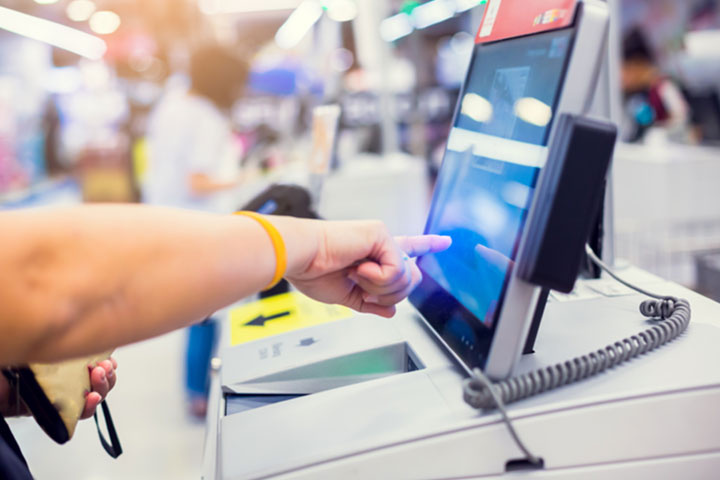11:00 am
Future Convenience Store Trends You Can’t Ignore

As a convenience store owner, it’s good to be a “tastemaker”. A trendsetter. A business that’s on top of the latest and greatest products and services. To stay ahead of the competition it helps to be always looking forward, to see what opportunities are on the horizon – and to determine how they might impact your business.
We’ve searched far and wide to compile a list of future convenience store trends that are making their way into the convenience sector.
1. Self-Checkouts:
Grocery chains were the first to give customers the option to bypass the line to scan, pack, and pay for their own items. Hardware and department stores soon followed. Recently, Canadian pharmacy chains have started to jump on the bandwagon. Expect convenience stores to start moving to this technology sooner than later (some are already leading the way). With equipment costs coming down, self-checkouts will allow convenience stores to reduce lineups and get customers in and out faster while reducing labour expenses.
2. Increased focus on sustainability.
Sustainability isn’t just a passing fad. Store owners who are proactive in finding ways to set themselves apart in this area will have an advantage over those that are slow to adapt.
A 2019 study revealed almost 60% of Generation Z consumers in Canada and the US said they prefer purchasing environmentally sustainable products. Convenience stores have already begun to follow the lead of fast food chains like McDonalds, which have been proactive in moving away from single-use plastics.
There is now added pressure to act fast. On October 7th the Federal Liberal Government announced it will be legislating regulations to ban several single-use plastic products in 2021. The initial list includes grocery bags, straws, stir sticks, cutlery, takeout containers, and six-pack rings. Convenience stores will need to rapidly source approved replacements, and determine how to manage the additional costs.
3. Mobile-ordering and delivery
The Covid-19 pandemic may have a lasting impact that extends far beyond health. Advice to avoid restaurants has led to an increase in take-out orders. This has accelerated the trend among young consumers to place delivery and pickup orders from convenience stores. While services such as Skip the Dishes, DoorDash, and UberEats allow convenience stores to offer take-out without the need for their own delivery service, many larger chains don’t like the idea of these services ‘eating their lunch’ and taking a sizeable cut of the profit. If the demand is there, stores may start to weigh the value of offering their own branded delivery services.
4. App-based Technologies to Attract Customers
These days, it seems like there’s an app for everything. People love their apps for convenience and cache. Many are tailor-made to loyalty and discount programs. They use smart technology to make it even easier for customers to take advantage of discounts. For businesses, the attraction of apps is their ability to get customers buying more… more regularly. National convenience and gas chains (from 7-11 to Circle K, Husky to Shell) have their own apps. To keep pace, independent stores are advised to find partnership opportunities that will allow them to introduce app-based programs to customers.
Did you know? Almost 1/3 of smartphone users prefer to use their device for product information as opposed to asking an employee. Source: Business Development Bank of Canada
5. Using Data to Drive Sales
We live in the age of “big data”, and have learned that the real genius behind social media isn’t about connecting people – it’s the ability to collect data on consumer wants, desires, and behaviours. Technology firms will make it easier for convenience stores to access and harness data to guide business decisions. This can influence which products stores carry and where they are placed. Data can be tailored to create personalized buyer experiences.
6. Durable Design Materials and Fixtures
New construction materials figured prominently in CSP Magazine’s list of “10 Hot C-Store Design Trends for 2020. One example included a stunning new flooring made of ground chips of marble, quartz, granite, and other materials. While it has a higher up-front cost, this flooring has a high absorption rate and provides extra durability. Vinyl tile is listed as a popular alternative, which is more cost-effective.
Other examples included a new pavement texture designed to hide oil drips for a more aesthetically pleasing parking lot. Brick pavers were listed as another alternative to the pavement, as it is easier to pressure wash.
7. Supporting Local
In an age of globalization, consumers still want to “support local” businesses. According to BDC, 97% of consumers decide to buy local to support the economy. And 87% think it’s better for the environment. For locally-owned convenience stores, there is an opportunity to leverage the local angle by carrying locally produced goods – and not being afraid to promote it!
